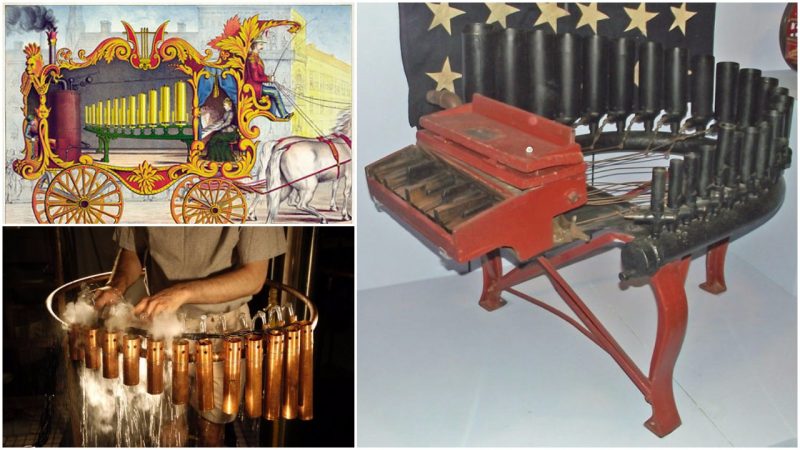The steam piano or ‘steam organ’ is known by the name calliope.
It works on steam or gas and more recently, compressed air, which is sent through large whistles that were originally locomotive whistles.
The sound of the calliope is so loud that it can be heard in the radius of miles. Its loudness was constant and couldn’t be controlled.
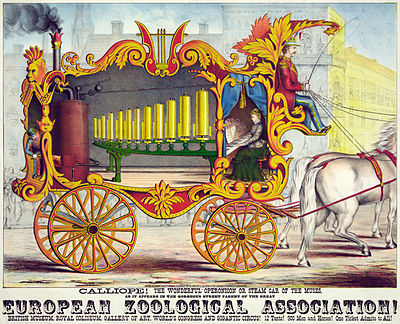
It was created by the American entrepreneur and inventor Norman G. Baker, who chose the name calliaphone, but the name was later registered by his own company, which produced instruments under the Tangley name.
However, the instrument had been invented before Baker, by the American inventor Joshua C. Stoddard, who patented the calliope in 1855.
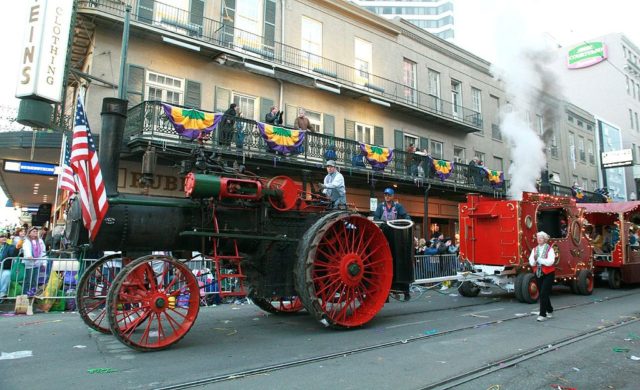
Even though Stoddard’s calliope was originally intended to be put in place of the church bells, it became common on the Mississippi riverboats of the paddle-wheel era.
Today such boats are a rarity but a famous few still exist – the Delta Queen, the Belle of Louisville, and President – and their calliopes are used to surprise cruising tourists.
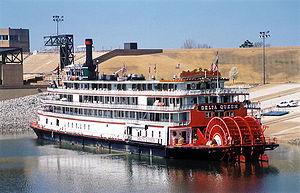
The calliope of Stoddard looks like a contemporary clockwork music box.
It has a metal roller with pins that open the valves, which allow the entrance of a steam into the whistles.
The calliope was improved with a keyboard instead of a cylinder later on, so it could be played like an organ.
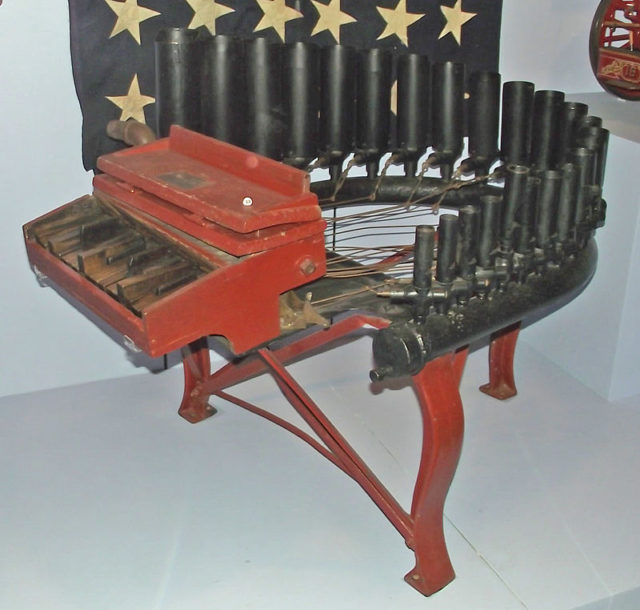
In the past, calliopes were mostly demanded by fairgrounds and circuses, while the most famous ones (surviving until today) are those produced by Thomas J. Nichol who built them from 1890 until 1932.
After him, there was David Morecraft, who is the last authentic steam calliope builder in the world.
His calliopes are featured in Peru’s annual Circus City Parade.
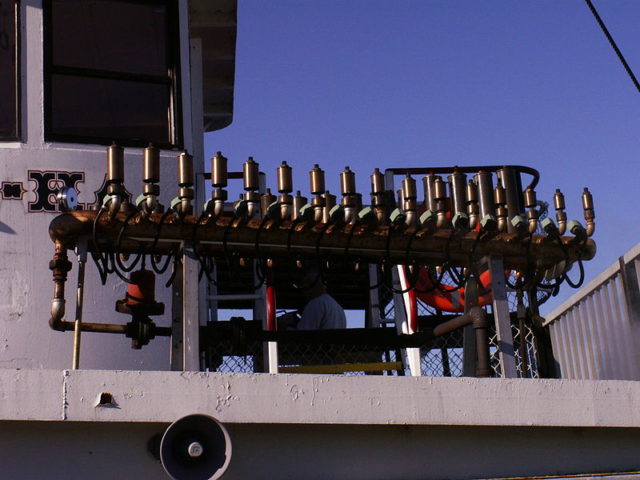
If you are wondering how it sounds, listen to The Beatles’ “Being for the Benefit of Mr. Kite!” from the album “Sgt. Pepper’s Lonely Hearts Club Band”.
Tapes of calliope music were used to create a circus atmosphere in the song.
Or “The Tears of a Clown” from Smokey Robinson & the Miracles, who used the calliope with the same purpose – to get a circus atmosphere. Also, the sound of calliope can be recognized in Tom Waits’ “Blood Money”.
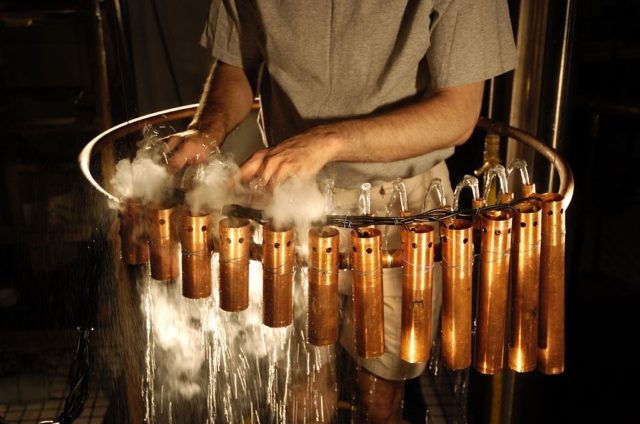
Actually, if you like the sound of calliope you can find many artists who used it in their music.
